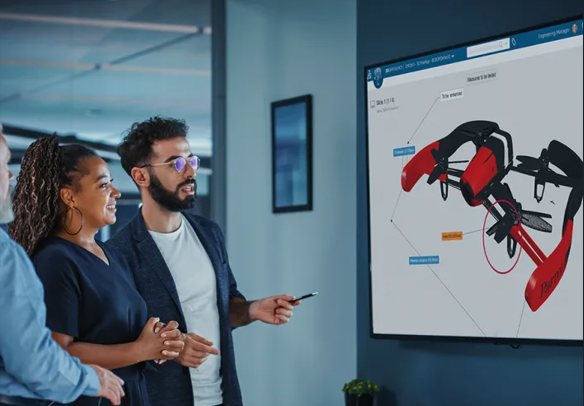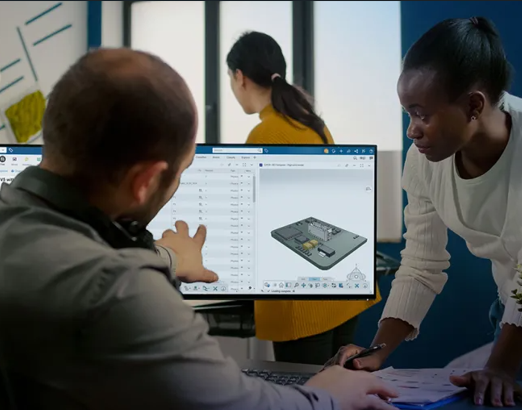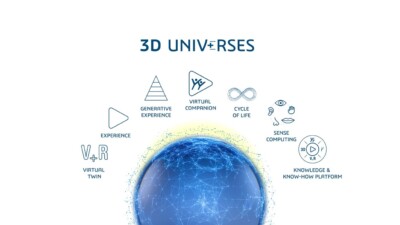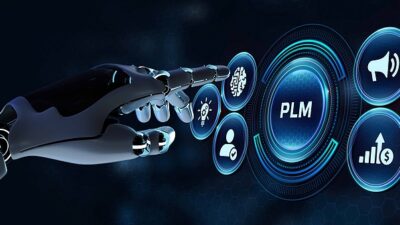The challenges in modern product development.
Dassault Systèmes has sponsored this post. Written by Nancy O’Flaherty, Senior Offer Marketing Manager, Dassault Systèmes.

The demands on product development organizations have never been more intense. Faced with shrinking go-to-market timelines, competitive pressures, stringent regulations and evolving customer expectations, companies must rethink how they design, develop and deliver products. Traditional Product Lifecycle Management (PLM) systems, once seen as essential tools, are increasingly viewed as a barrier to innovation rather than a catalyst. While effective at managing data repositories, these legacy systems fail to keep pace with modern, interconnected, agile development methods.
Consequently, many organizations grapple with the challenges of siloed decision-making. When departments operate in isolation, it results in ineffective communication and collaboration, creating obstacles that complicate the already demanding landscape of product development. This disconnection can significantly extend project timelines, introduce errors and stifle creativity. Moreover, the burden of cumbersome administrative tasks often leaves little room for teams to focus on what truly matters: driving innovation and delivering high-quality products. Additionally, a lack of visibility into project statuses and accountability makes it difficult for stakeholders to track progress and make informed decisions.
Companies need to fundamentally shift toward model-based, data-driven product development, providing the tools and capabilities required to solve today’s challenges and unlock new opportunities for the future.
Several well-documented issues hamper product development. These challenges limit efficiency, stifle innovation and increase costs.
Siloed decision-making
Traditional systems promote fragmentation. Teams work in isolation, with data scattered across siloed applications. This slows collaboration and decision-making, creating bottlenecks in project timelines.
Slow innovation and burdensome administrative tasks
Traditional PLM systems are often file-based and BOM-centric, forcing teams to manage duplicate data manually and synchronize updates. This tedium reduces focus on creativity and problem-solving.
Lack of transparency and accountability
Meeting regulations and achieving traceability remain uphill battles. Data remains locked within engineering systems, inaccessible to non-engineering disciplines that could greatly benefit from its insights.
Barriers to adopting model-based engineering
Most legacy systems are not equipped for agile product development or model-based systems engineering (MBSE), which are critical methods for creating complex, software-driven products.

Rethinking product development: Transforming challenges into innovation
A unified innovation platform transforms how organizations approach product development. It goes beyond addressing IT or data management issues and transforms how teams collaborate, innovate and succeed.
In today’s challenging environment, the 3DEXPERIENCE platform significantly changes how companies handle product development, providing solutions designed to address key issues directly. By fostering a unified, holistic environment that enhances communication across disciplines, the platform effectively breaks down silos, enabling teams to collaborate seamlessly.
ENOVIA on the 3DEXPERIENCE platform connects all disciplines throughout the product lifecycle. This foundational capability eliminates the barriers created by siloed systems and fosters cross-disciplinary collaboration. Critically, it provides compatibility with legacy systems, ensuring a smooth transition to this innovative platform.
Real-time access to 3D-configured engineering data allows users to retrieve information instantly, from anywhere and on any device. This capability enables stakeholders from engineering, design, manufacturing and marketing to interact with and make decisions based on the same 3D data in a fully interactive manner. The benefits are evident — leaders can make informed decisions using actionable insights rather than relying on outdated information.
Built-in collaboration and data science tools
Virtual Twin Experiences transform collaboration and decision-making by creating dynamic, digital replicas of physical products, processes or entire enterprises. These virtual models enable real-time simulation, analysis and optimization, bridging the gap between the physical and digital worlds. By leveraging technologies such as IoT, AI and advanced analytics, virtual twins provide actionable insights, enhance decision-making and improve efficiency across the product lifecycle or organizational operations. They empower organizations to predict outcomes, test scenarios and innovate faster, ultimately driving smarter strategies and sustainable growth.
Support for MBSE
Unlike legacy PLM solutions, the 3DEXPERIENCE platform offers native support for MBSE, a crucial differentiator in today’s complex, software-driven environments. From defining use cases to designing and validating systems, MBSE workflows are integral to the platform’s capabilities, paving the way for faster, more effective development cycles.
Capitalizing on enterprise knowledge with AI
The 3DEXPERIENCE platform helps organizations unlock and leverage their intellectual property. Using AI-powered generative experiences, the platform reveals hidden opportunities in enterprise knowledge, enabling teams to learn from the past and innovate for the future.

Transforming product development with proven results
“This is really a big advantage for us, that we have a best-in-class system that we can use to track, manage and ultimately act on, manufacture and bring to market what started out as data and turns into the real world,” Allison said. “To create world-class technology, you have to use world-class technology.” —Eric Allison, Chief Product Officer, Joby Aviation
“A holistic digital model comprising all the attributes of each discipline invariably shortens time to market because we can work faster and more efficiently.” —Bernd Hirt, Group Manager Core Function Mechanics, Bosch Car Multimedia
Why invest in the 3DEXPERIENCE platform now
The stakes for product development teams have never been higher. Competitive pressures, workforce dynamics and sustainability goals are reshaping industries. Resilience and adaptability are no longer merely desirable, they are essential for survival and market leadership.
The 3DEXPERIENCE platform provides a critical framework for navigating these challenges and unlocking new opportunities. By adopting a unified platform, organizations position themselves for the future of innovation, efficiency and collaborative success.
The time to act is now. Unlock a new realm of possibilities for your product development processes and shift from file-based, siloed systems to an agile, innovation-first future. Download the e-book to learn more.
About the Author
Nancy O’Flaherty is a Senior Offer Marketing Manager at Dassault Systèmes, where she has spent the past 17 years developing marketing strategies to drive product awareness, customer engagement and adoption. With over 25 years of experience in the high-tech industry, Nancy has strong expertise in market trends, customer needs and positioning technology solutions for success.



